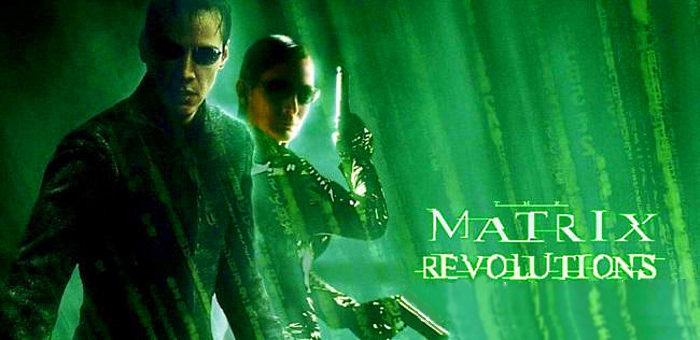
The Matrix Revolutions (2003), directed by the Wachowskis, serves as the third and final chapter in The Matrix trilogy. Picking up directly after the events of The Matrix Reloaded, the film concludes the story of Neo (Keanu Reeves), his battle against the machines, and the fate of both the human race and the world of the Matrix. Though the film received mixed reviews upon its release, The Matrix Revolutions is an ambitious and visually stunning conclusion to a groundbreaking sci-fi saga that pushed the boundaries of cinema.
The plot centers on two major conflicts: the war between humans and machines in the real world, and Neo’s journey to end the threat of Agent Smith (Hugo Weaving) within the Matrix. As Zion, the last human city, is under siege by a massive machine army, Morpheus (Laurence Fishburne), Trinity (Carrie-Anne Moss), and the rest of the human resistance fight desperately to protect their home. Meanwhile, Neo embarks on a personal mission that leads him to the Machine City, where he hopes to negotiate peace and bring an end to the centuries-long conflict.
One of the film’s highlights is its impressive visual effects, particularly during the climactic battle for Zion. The massive mech battle, where human soldiers in giant exo-suits face off against swarms of Sentinels, is a visual spectacle filled with intense action and high-stakes drama. The CGI and practical effects, coupled with the Wachowskis’ visionary direction, create a sense of scale and danger that leaves a lasting impression.
The final showdown between Neo and Agent Smith inside the Matrix is another standout moment. Set in a rain-soaked, apocalyptic cityscape, the battle is an epic, superhuman brawl that showcases the series’ signature slow-motion, gravity-defying combat. The fight represents the ultimate clash of opposing forces—Neo, the symbol of hope and freedom, versus Smith, the embodiment of chaos and control. The fight culminates in a philosophical resolution that highlights the core themes of choice, balance, and destiny.
At its heart, The Matrix Revolutions continues to explore the deep philosophical questions that defined the series, including the nature of reality, free will, and the balance between man and machine. Neo’s journey is one of self-discovery and sacrifice, as he learns that his role as “The One” extends beyond the confines of the Matrix and the human struggle. The film’s themes of duality and equilibrium resonate in its climactic moments, where peace is achieved through understanding rather than sheer force.
While the film’s visuals and action sequences were widely praised, The Matrix Revolutions faced criticism for its complex narrative and ambiguous ending. Some viewers felt that certain plot threads were left unresolved, while others appreciated the film’s deeper, more philosophical approach to concluding the trilogy. The film’s slower pacing compared to its predecessors also divided audiences, as it spent more time on character development and moral dilemmas than on action.
Despite the mixed reception, The Matrix Revolutions is a fitting and visually ambitious conclusion to one of the most influential sci-fi trilogies in film history. Its legacy endures as a bold, thought-provoking exploration of technology, human nature, and the intersection of both in a world where reality is not what it seems.




